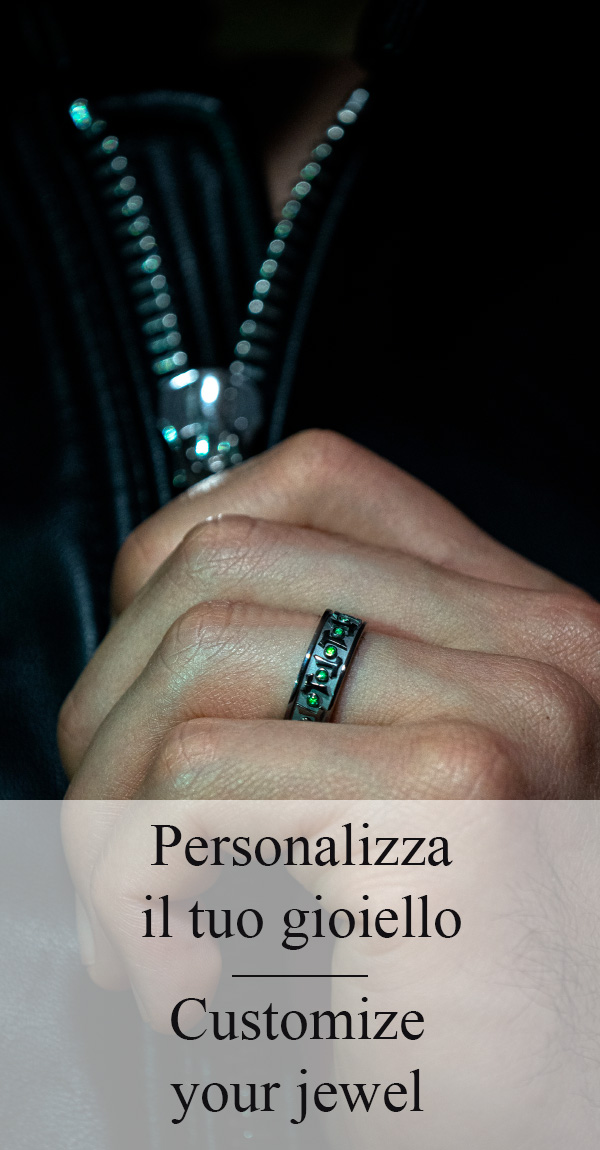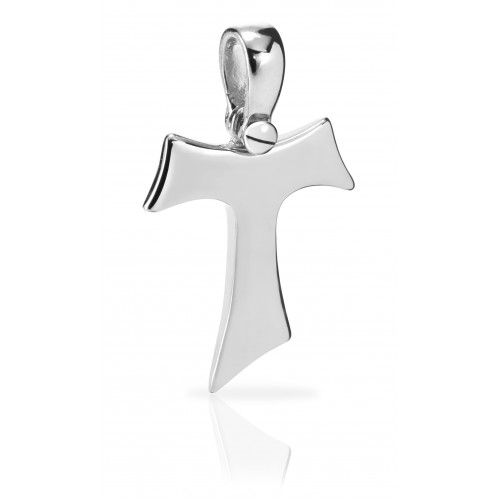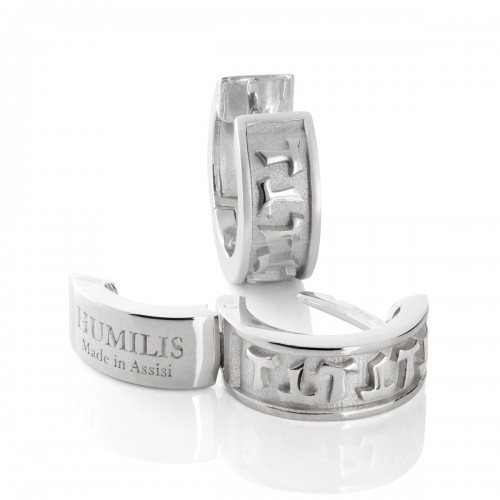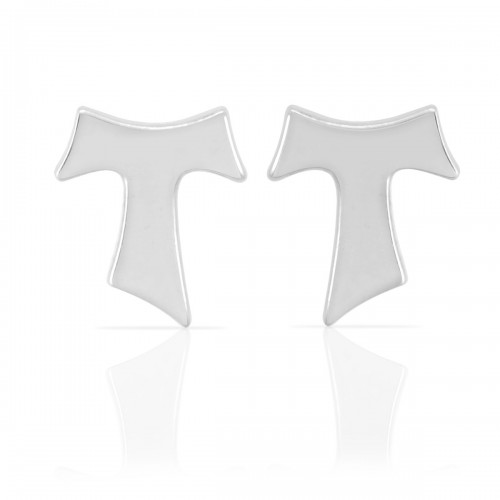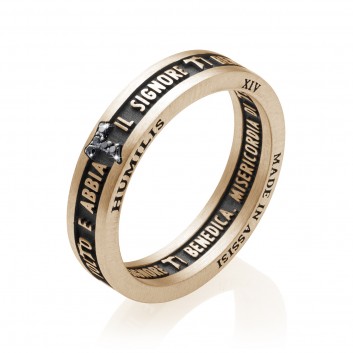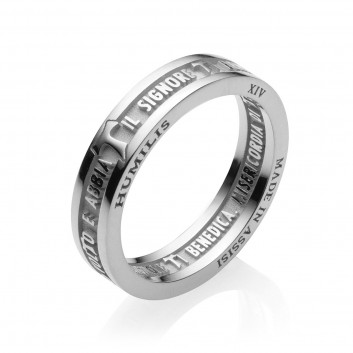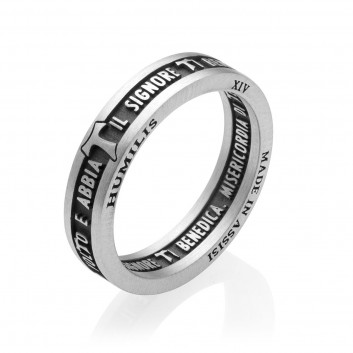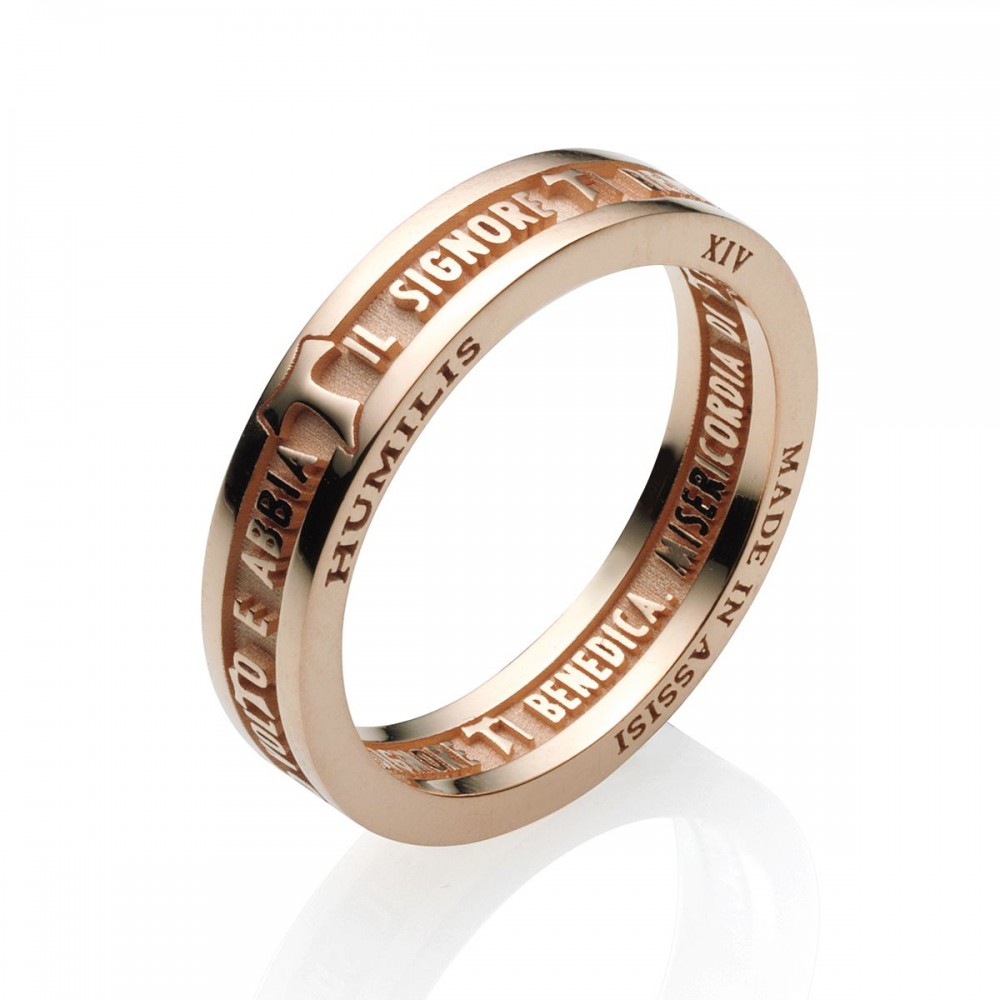
Data sheet
- Material
- Rose gold plated sterling silver 925
- Finishing
- Polished and satin
- Manufacturing
- High and low relief
- Ring width
- 4 mm - 0.16 inches
- Guarantee
- We provide a certificate of authenticity stating the metal used (18kt gold or 925 Sterling Silver). In addition, information about the TAU cross is provided in both Italian and English language. All jewellery comes in a gift box and a sealed carry bag.
- Type
- Rings
Saint Francis of Assisi speaks to people of all ages, from young to old, and never fails to fascinate and intrigue.
He does so in his innumerable writings, some of them which are signed and have survived to the present day. Through his writings we can hear his voice, at times calm and gentle and at other times firm and authoritative, skilfully displaying his mastery of Latin.
We possess little textual evidence of the saints, and much of what we do know was written about them after their deaths.
The large number of documents attributable to Saint Francis, however, is thanks to Brother Leo, who kept them safe with loving care throughout his life.
Leo, a learned priest and skilled calligrapher, was one of Francis’s first and most favoured companions.
He was a faithful friend, an inseparable secretary, a simple and pure interpreter of the thoughts of the saint and was also eyewitness to the final years of Francis's life, when he wrote about the saint's moral anguish and physical suffering almost day by day, hour by hour.
Leo witnessed some of the most significant episodes of Francis' life: he was by his side when Francis wrote the New Rule and had the privilege of seeing and touching the stigmata that Francis received on Mount La Verna.
The deep and inseparable bond between the two is confirmed in the signed letter Saint Francis dedicated to Brother Leo.
It is a blessing that the saint gave to his companion who he felt needed comfort and encouragement, and it tells of the closeness of these two men who were determined to pursue a shared mission.
This is a short letter hand-written in 1224 on Mount La Verna immediately after the stigmatisation of Saint Francis. It is kept in the Basilica of Saint Francis where it is considered to be one of the most precious relics.
At the end of the letter one can see the "Tau" symbol of the cross with which Francis signed all his writings.

